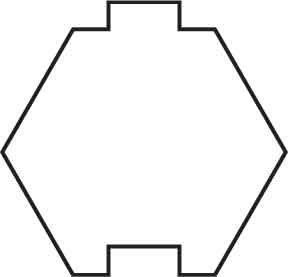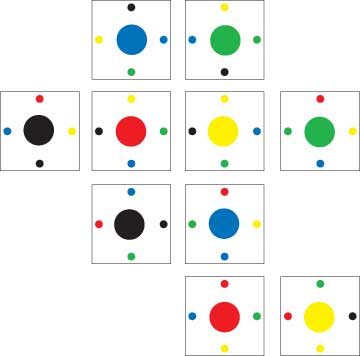I am looking for some ideas on how to elegantly solve the following problem:
The game board is made up of tiles that create a maze. This maze should be uncovered during the game by initially placing the tiles upside-down leaving the players in the dark what the maze looks like. As the game progresses players flip individual tiles over and towards the end will be able to see and navigate the entire maze. The complicated part is that I do not want the board layout to be random. In order to do this I could label each tile on the back, and then provide a setup manual which tells you to put tile #27 top left, then #13 to the right of it, etc. For the next round they might have to put #9 in the top left corner and #5 next to it. So the setup will not be identical every time you play the game.
There are two problems with this approach that come to my mind:
a) Comparing numbers during setup could be tedious and maybe symbols or some jigsaw like locking mechanism might make it easier/faster
b) If some of the maze tiles contains traps, players might remember the label on the back and avoid flipping over these tiles, thus spoiling the surprise.
I thought about printing the labels in light blue so that you'll need (transparent red) "spyglasses" to set them up and can't see them during regular gameplay. Again this adds to the annoyance factor during setup.
Any suggestions on how to make people arrange tiles in a certain order
without it being too cumbersome and without players knowing what to expect from a certain tile ? It seems these goals are mutually exclusive..











Thank you for your response. I have found the article and your notes interesting to read, but it does not address the problem I am concerned with. Basically I am looking for a way to make players set up the maze that is easy /quick on the one hand, yet complex so as to avoid premature knowledge on the part of whoever sets up the maze. So it's not really about game mechanics, but about tile/piece design. (Of course if a suitable piece design does not exist I might have to abandon the underlying mechanics, but that would be a last resort).
Let's assume this was an RPG. The dungeon master would set up the dungeon and know all it's corridors and then the players would stumble along blindly, discovering the dungeon as they go along, without knowing where the pits & monsters are. Now try removing the dungeon master but keeping the exploration of a preset dungeon intact. Is there any way to do this ?
Back to the original maze idea: if we had a tiny 3x3 grid, then my rule book might say that for the first round you are to set up numbered tiles like this:
1 2 3
4 5 6
7 8 9
Players flip the tiles around, then move their pawns through the revealed maze and finish the round. Going back to the rule book they find that the second round setup is like this:
6 1 8
5 2 3
4 9 7
Again this could be an interesting maze, but an observant player might have noticed in the first round that the tile labelled #3 contained a deadly monster. Obviously this time around they will try to avoid flipping tile #3 and thus making the monster very unhappy.
My question then is: how can I tell players to lay out tiles in a specific order but at the same time make it hard for them to memorize the good & bad tiles from previous rounds ?
The secondary question is: is there a better marking system than numbering the tiles ? Most people (board game geeks excluded) are bad with numbers. Maybe some symbols or colors would make it easier and more fun to lay out the grid ?